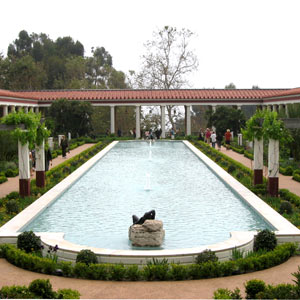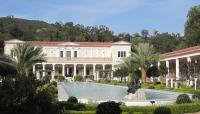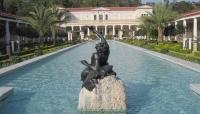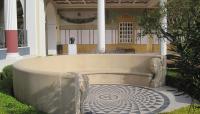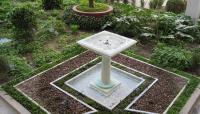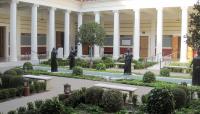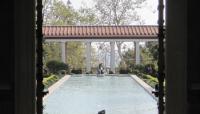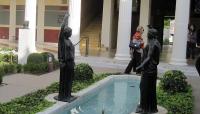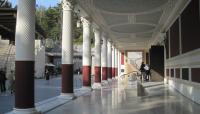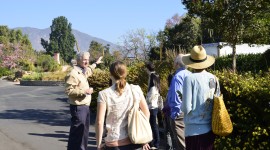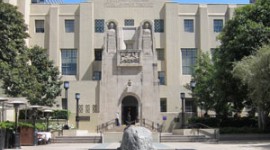Landscape Information
Sited in a narrow canyon filled with eucalyptus trees, this art complex highlights Greek, Roman, and Etruscan artifacts collected by J. Paul Getty. In 1968, Getty sought to build a gallery on his 64-acre estate modeled after Villa dei Papiri, a Roman country house outside Herculaneum. Completed in 1974, the two-story villa and gardens were designed by architects Robert Langdon and Ernest Wilson and landscape architect Denis Kurutz with Emmet L. Wemple & Associates. Replete with bronze sculptural replicas, fountains created by Bruce Ptolomy, and over 300 plant varieties used by ancient Romans, the villa’s four gardens were conceived as authentic settings for the display of antiquities.
The largest garden, the Outer Peristyle, is enclosed by a Doric and Corinthian-columned peristyle. The garden's centerpiece is a 220-foot long, rectangular reflecting pool edged by hedge-lined concrete footpaths, circular stone benches, and raised beds of boxwood, myrtle, ivy and roses. In the Herb Garden, a square basin filled with water lilies is surrounded by herb beds, fruit trees and an olive grove. The Inner Peristyle is an atrium garden that features replicas of Roman statuary and ivy topiary around a long, narrow reflecting pool. The enwalled East Garden, bordered by a clipped boxwood hedge, is shaded by mulberry and laurel trees and contains two sculptural fountains.
Between 1997 and 2006, the villa was closed for renovations led by Denis Kurutz and architects Machado and Silvetti. After Kurutz’s death in 2003 Korn Randolph, Inc. continued his work, moving 100 existing trees and planting 1,200 new trees on the grounds.




